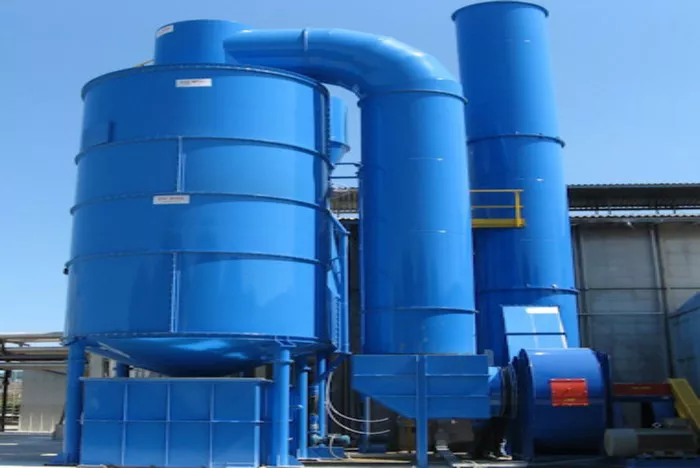Scrubbers play a crucial role in various industries, helping to clean air emissions and mitigate environmental pollution. Understanding the different types of scrubbers can aid in selecting the most suitable option for specific applications. Let’s explore the various types of scrubbers and their functionalities.
1. Wet Scrubbers
Wet scrubbers are one of the most common types of air pollution control devices. They work by spraying a liquid solution, typically water or a chemical reagent, onto the exhaust gas stream. The pollutants in the gas are absorbed or dissolved into the liquid, effectively removing them from the air.
a. Venturi Scrubbers
Venturi scrubbers utilize the Venturi effect to enhance particle capture efficiency. The gas stream is forced through a constricted throat, increasing its velocity and creating turbulence. This turbulence promotes contact between the gas and liquid, facilitating the capture of particles and pollutants.
b. Spray Tower Scrubbers
Spray tower scrubbers consist of a vertical chamber where the gas stream flows upward while being sprayed with liquid from above. The pollutants in the gas are absorbed into the liquid droplets as they collide, effectively removing them from the air. Spray tower scrubbers are particularly effective for removing soluble gases and fine particulate matter.
c. Packed Bed Scrubbers
Packed bed scrubbers contain a bed of packing material, such as plastic or metal sheets, which provides a large surface area for contact between the gas and liquid phases. As the gas passes through the packing material, pollutants are absorbed or adsorbed onto the surface, effectively cleaning the gas stream.
2. Dry Scrubbers
Unlike wet scrubbers, dry scrubbers do not use liquid to remove pollutants from the gas stream. Instead, they rely on a dry sorbent material, such as lime or activated carbon, to adsorb or react with the pollutants. Dry scrubbers are commonly used in applications where the introduction of liquid into the process is undesirable or impractical.
a. Dry Sorbent Injection (DSI) Systems
DSI systems inject dry sorbent materials directly into the gas stream, where they react with acidic gases such as sulfur dioxide (SO2) or hydrogen chloride (HCl). The reaction products are then captured using particulate control devices such as fabric filters or electrostatic precipitators.
b. Spray Dryer Absorbers (SDAs)
SDAs utilize a spray dryer to atomize a slurry of sorbent material and water into fine droplets, which are then mixed with the hot flue gas stream. The pollutants in the gas react with the sorbent droplets, forming solid particles that are captured in a downstream particulate control device.
3. Electrostatic Precipitators (ESPs)
Electrostatic precipitators are air pollution control devices that use electrostatic forces to remove particulate matter from the gas stream. The gas passes through a series of charged plates or wires, which impart a negative charge to the particles. The charged particles are then attracted to positively charged collection plates or electrodes, where they accumulate and are removed from the gas stream.
4. Scrubber Selection Considerations
When selecting a scrubber system for a particular application, several factors must be considered:
a. Pollutant Type and Concentration
Different scrubber systems are designed to remove specific types of pollutants, such as particulate matter, acidic gases, or volatile organic compounds (VOCs). The concentration of pollutants in the gas stream will also influence the choice of scrubber technology.
b. Gas Flow Rate and Temperature
The volume and temperature of the gas stream will impact the performance and efficiency of the scrubber system. Higher flow rates may require larger scrubber units or multiple stages to achieve the desired pollutant removal efficiency.
c. Space and Installation Constraints
The available space and installation requirements must be taken into account when selecting a scrubber system. Some scrubber technologies may require significant space for installation and operation, while others may offer more compact designs suitable for limited space applications.
d. Cost and Maintenance Considerations
The initial cost of the scrubber system, as well as ongoing maintenance and operating expenses, should be evaluated to determine the overall cost-effectiveness of the solution. Factors such as energy consumption, consumable materials, and maintenance requirements will impact the total cost of ownership over the life of the system.
Conclusion
Scrubbers play a vital role in controlling air pollution and mitigating environmental impacts across various industries. By understanding the different types of scrubbers and their functionalities, stakeholders can make informed decisions when selecting and implementing air pollution control solutions. Consideration of factors such as pollutant type, gas flow rate, space constraints, and cost considerations is essential for choosing the most suitable scrubber system for specific applications. Ultimately, effective air pollution control measures contribute to cleaner air and a healthier environment for all.

